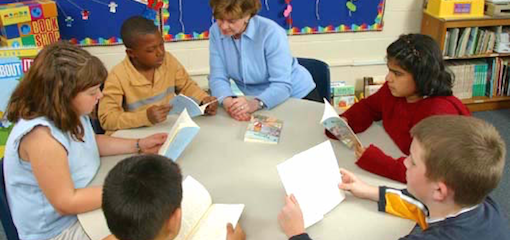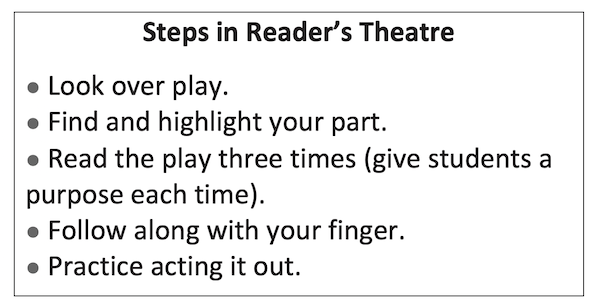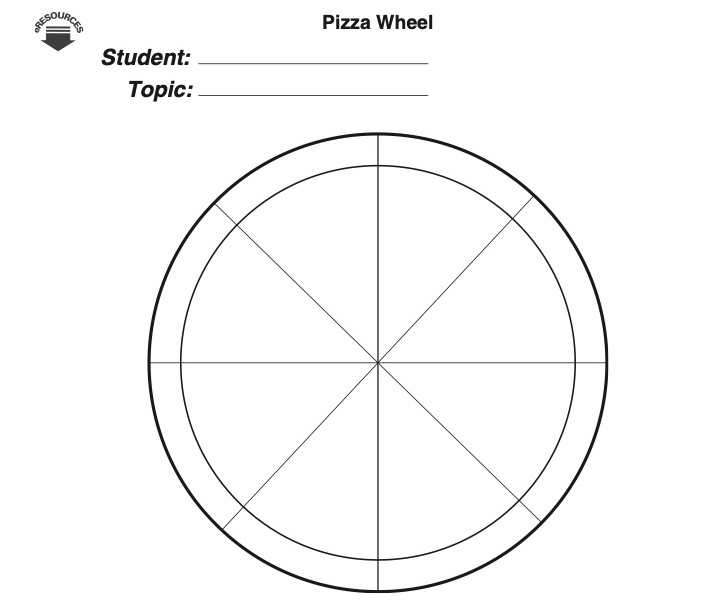Literacy for Students with Special Needs
By Barbara R. Blackburn and Bradley Witzel

We can provide support for these students by focusing on providing a base of knowledge, opportunities to build fluency, and comprehension activities.
Building a Base of Knowledge

Patterns of Understanding
Helping students look for and organize patterns from reading is critical. You can do this in a variety of ways. Many teachers simply ask students to look at text or listen to text and write down patterns. However, you may want to provide structure.
With letterboxes, you give students a paper with a certain number of boxes. This lets them know how many patterns they are looking for. If there are two boxes, they are looking for two patterns, and they put the appropriate words or phrases in the boxes.
To begin, you will tell them the patterns, but over time, they can discover the patterns on their own. Also, some students will learn better through physical manipulation, so you can use word cards.
As students master 3 Alike, you move on to What Doesn’t Belong? In this game you provide students with four examples, and ask them to tell you which one does not belong as well as why it doesn’t.

Providing Opportunities to Build Fluency
Fluency, or effortless and automatized reading, is a critical skill for students of all ages. It is also a major stumbling block for students with special needs. If students are equivocating over every word, it negatively impacts their learning, whether in reading, science, or any other subject. There are several strategies that assist in building fluency.
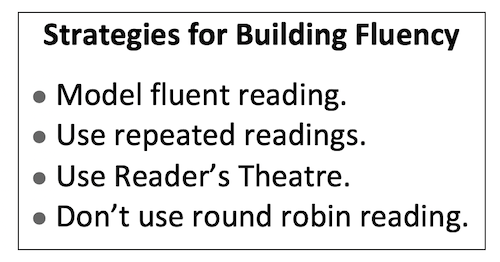
Additionally, we want to provide multiple opportunities for students to read fluently, which means providing books that are easier to read such as the Diary of a Wimpy Kid series and Mascot.
In a content area class we may periodically use easier articles, which can be found in a variety of databases such as Newsela or TweenTribune. The key is to find text that is below an instructional or frustration level – one in which students should know the bulk of the vocabulary.
When students only read challenging material, they tend to struggle. Both levels are appropriate, depending on your purpose.
Reader’s Theatre
Reader’s Theatre is an excellent way to give students opportunities to read aloud fluently in smaller groups. By reading directly from simple scripts, students focus on the text rather than on trying to memorize their parts.
Be sure to give them an opportunity to read the material in advance; if students read aloud the first time they encounter the text, they are more likely to focus on decoding words instead of comprehension. That is one advantage of Reader’s Theatre. It allows students to practice with a purpose.
Enhancing Comprehension
There are a variety of ways to help students comprehend text at a higher level. We’ve found that using graphic organizers and providing opportunities for students to work together are particularly helpful.
Pizza Wheel
A pizza wheel allows students to demonstrate their comprehension of content, whether a discussion, video, or text. In small groups each student has a pizza wheel. He or she writes his or her name on the “crust” then something they learned on one slice.
Next, each student gives his or her wheel to the person to the right, and each student writes his or her name and a fact on another slice. They continue to rotate the pizza wheels until all slices are completed.
Then you can lead a class discussion of the content, with students using the information on their pizzas. This is particularly helpful for students with special needs since they have access to knowledge other students have learned. You can also adjust the number of slices anywhere from 2-8 depending on your students’ needs.
A Final Note
Students with special needs often need additional help with literacy skills across all areas of the curriculum. Since literacy is the key that opens all content, we’ll want to help students see patterns, read fluently, and comprehend information every day.
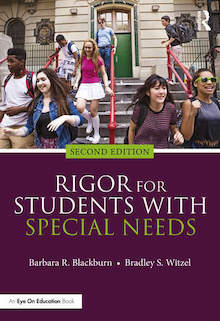
Bradley Witzel (@bradwitzel) is the Adelaide Worth Daniels Distinguished Professor of Education at Western Carolina University and has worked as a classroom teacher and before that as a paraeducator with high-achieving students with disabilities. He has written nine books and over 50 other professional publications, developed over 20 multimedia resources, and delivered over 500 presentations and workshops.
Barbara and Brad are the authors of Rigor for Students with Special Needs, 2nd edition from Routledge/Eye On Education.

